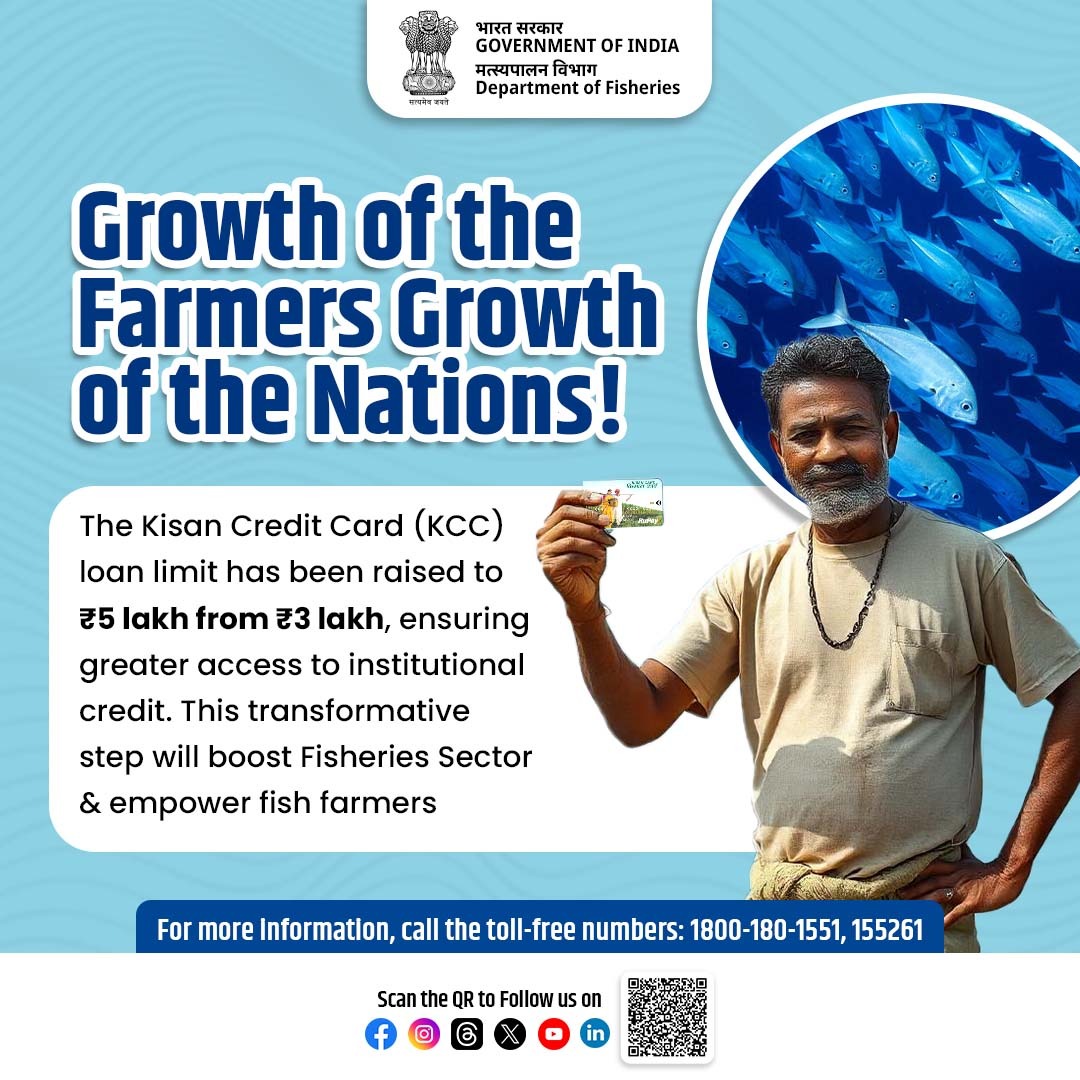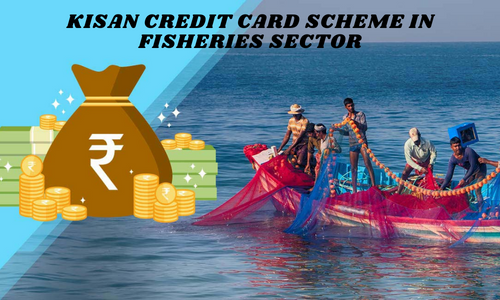|

The Government of India has increased the Kisan Credit Card (KCC) lending limit. Photo: Stockfile/FIS
India's Fisheries Sector Demonstrates Robust Growth, Holding Approximately 8% Share in Global Fish Production
 INDIA
INDIA
Monday, February 17, 2025, 00:10 (GMT + 9)
India's fisheries sector has undergone a significant expansion and transformation over the past two decades, as highlighted by the Ministry of Fisheries, Animal Husbandry, and Dairying.
New Delhi (ANI): India now stands as the second-largest fish-producing nation, contributing roughly 8% to global fish production. The period from 2004 to 2024 has been characterized by substantial technological advancements and strategic policy reforms, solidifying India's position in global fisheries and aquaculture.

The Union Budget 2025-26 proposes an unprecedented total annual budgetary allocation of approximately USD 324 million (converted from Rs. 2,703.67 crores, using an approximate exchange rate of 1 USD = 83.5 INR). This allocation underscores India's growing prominence as a leader in aquaculture and seafood exports.
The 2025-26 budget strategically prioritizes enhanced financial inclusion, reduces the financial burden on fishers by lowering customs duties, and fosters the development of marine fisheries. Furthermore, the budget emphasizes the establishment of a framework for the sustainable utilization of fisheries resources within the Exclusive Economic Zone (EEZ) and High Seas, with a specific focus on Lakshadweep and the Andaman & Nicobar Islands. This initiative aims to unlock the untapped potential of marine fish resources in the Indian EEZ and adjacent High Seas, driving growth in the marine sector.

The Government of India has also increased the Kisan Credit Card (KCC) lending limit from approximately USD 36,000 to USD 60,000 (converted from Rs. 3 lakh to Rs. 5 lakh) to improve credit access for fishers, farmers, processors, and other fisheries stakeholders. This measure aims to streamline the flow of financial resources, ensuring that necessary funds are readily available to meet the sector's working capital requirements.
According to ministry data, fish production has surged to 18,402 metric tons (2023-24) from 9,579 tons (2013-14) and 6,399 metric tons (2003-04), representing an increase of 8,823 metric tons in the past ten years (2014-24) compared to an increase of 3,180 metric tons in the preceding decade (2004-14).

Inland and aquaculture fish production witnessed a remarkable increase of 7,771 metric tons from 2014-24, compared to 2,678 metric tons from 2004-14. Marine fish production increased by 5,500 metric tons from 2014-24, compared to 1,052 metric tons from 2004-14.
As reported by the Marine Products Export Development Authority (MPEDA), India exported 1,781,602 metric tons of seafood valued at approximately USD 725 million (converted from Rs. 60,523.89 Crore). This represents a substantial increase from approximately USD 73 million in 2003-04 (converted from Rs. 609.95 Crore).
editorial@seafood.media
www.seafood.media
|



